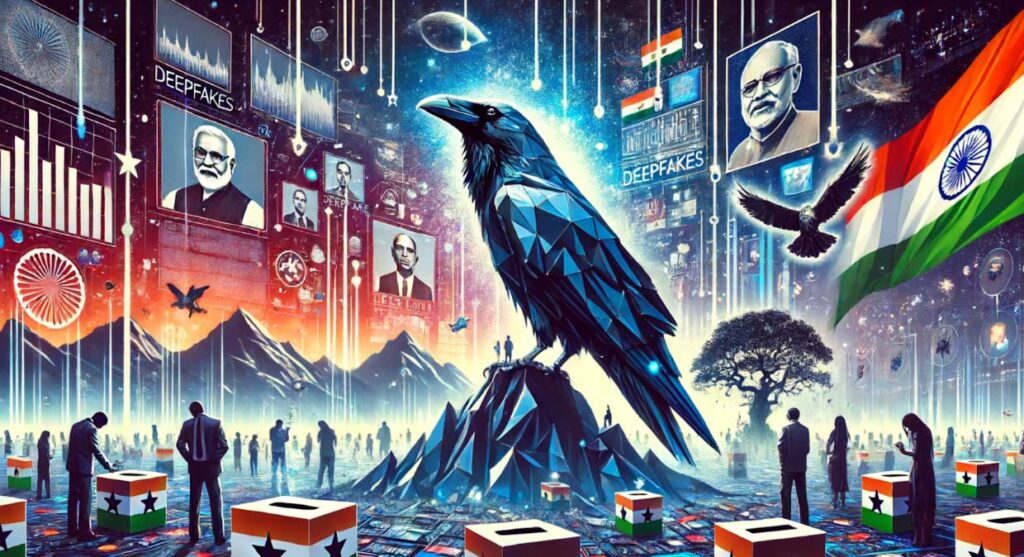
Introduction: A Crisis of Reality
On a quiet morning in March 2023, a video surfaced of Ukrainian President Volodymyr Zelensky appearing to surrender to Russia. His tone was defeated, his words chilling, and his face unmistakably his own. Within minutes, it spread across Telegram, TikTok, and Twitter. It was convincing. It was believable. It was fake.
The clip was a deepfake, an artificial video created using advanced machine learning techniques. In an age where misinformation already thrives, deepfakes introduce a new era—one in which “seeing is no longer believing.” From elections and financial scams to revenge and identity theft, deepfakes are not only altering how we perceive reality, they are fundamentally reshaping the nature of truth.
In this exposé, Alerting News investigates the origins, evolution, and impacts of deepfakes—revealing a high-tech arms race unfolding in real-time.

Chapter 1: The Birth of Deepfakes
The term “deepfake” is a portmanteau of deep learning and fake. It first appeared in 2017 when an anonymous Reddit user posted celebrity faces superimposed onto pornographic content. The technology used? An AI model trained on thousands of facial images, learning to replicate voice patterns, facial movements, and expressions.
Soon after, open-source deepfake software such as FakeApp and DeepFaceLab made it easy for amateurs to experiment with face-swapping and voice cloning.
How It Works:
- Face Mapping: AI maps facial features of a target.
- Training the Model: Neural networks learn speech patterns and movement.
- Synthesis: The system overlays the learned face/voice onto a new source.
- Refinement: The result is edited using traditional CGI and sound design tools.
These tools have become exponentially more powerful—and accessible. In 2020, deepfakes were largely entertaining novelties on YouTube. By 2023, they were weaponized propaganda tools.
Chapter 2: The Deepfake Underground
A burgeoning black market for synthetic media has emerged on the dark web and private forums. You can now purchase:
- Custom revenge porn deepfakes
- Fake evidence for court cases
- AI-generated audio for phishing scams
- Political impersonations for disinformation
Case Study: The CEO Scam
In 2021, cybercriminals in the UK used a deepfake audio clip to impersonate a German CEO. The voice ordered a transfer of €220,000 to a fraudulent account. It succeeded. Voice cloning AI had perfectly mimicked the executive’s accent, cadence, and urgency.
According to cybersecurity firm Symantec, deepfake-enabled attacks cost companies over $250 million globally in 2023 alone.

Chapter 3: Politics and Propaganda
Deepfakes are rapidly becoming tools for political manipulation. In fragile democracies, synthetic media can:
- Sow distrust during elections
- Incite violence through fake hate speech
- Fabricate confessions or policy statements
- Discredit whistleblowers and journalists
Case Study: India’s 2020 Delhi Elections
A BJP candidate used a deepfake video to deliver campaign messages in two languages he doesn’t speak. The video went viral. While technically legal, it raised alarms about manipulating voters with fake but persuasive content.
International Concerns:
- China: Uses state-sponsored deepfakes to spread positive narratives.
- Russia: Has been accused of using synthetic audio in misinformation campaigns.
- United States: The FBI labeled deepfakes a national security threat in 2022.
In short: Deepfakes are a new class of political cyberweapon.

Chapter 4: Identity, Consent, and the Law
The rise of deepfakes has led to a profound erosion of personal identity and consent. Victims—especially women—often find their likeness used in pornographic or violent content without their knowledge.
A report by Sensity AI found that over 96% of all deepfake videos online were non-consensual pornographic content featuring female celebrities, influencers, and even minors.
Legal Grey Areas:
- United States: Few federal laws prohibit deepfakes unless they involve explicit content or financial fraud.
- UK: Passed a law in 2024 criminalizing non-consensual deepfake porn.
- China: Requires synthetic videos to carry a watermark.
Despite this, enforcement remains slow and ineffective. Victims must often fight tech companies for content takedowns, many of which are hosted on foreign servers.

Chapter 5: The Arms Race — Detection vs. Creation
For every tool built to detect deepfakes, a better tool emerges to defeat it. It’s a cat-and-mouse game between AI creators and AI detectors.
Detection Techniques:
- Reverse Video Search: Checking source authenticity.
- Biometric Analysis: Looking for blinking patterns, lip-sync mismatches.
- Blockchain Tagging: Tracking media origin with immutable timestamps.
Enter Project Origin:
A collaboration between Microsoft, BBC, and The New York Times, Project Origin adds digital provenance metadata to verify source authenticity. It’s a promising step—but not a silver bullet.
Chapter 6: The Future — Deep Real or Deep Regret?
As deepfake technology matures, experts warn we may be entering a “post-truth era” where any inconvenient reality can be dismissed as “fake.”
Coming Threats:
- Fake Historical Evidence: Altering archived footage to change public memory.
- Synthetic World Leaders: AI avatars holding press conferences.
- Emotional Manipulation at Scale: Targeted deepfakes used to enrage, divide, or radicalize.
But There Is Hope:
- Media Literacy Campaigns: Teaching citizens to spot misinformation.
- AI Watermarking: Companies like OpenAI, Google, and Adobe are embedding metadata into synthetic content.
- Ethical AI Development: “Do not release” guidelines for potentially dangerous tools.
Even so, vigilance is crucial.

Chapter 7: What Can You Do?
As a reader and global citizen, you’re not powerless. Here’s what you can do to protect yourself and your community:
✅ Learn to Spot Deepfakes
- Watch for unnatural blinking, poor lighting, odd facial movements.
- Use browser plugins that reverse search video frames.
✅ Verify Before Sharing
- Cross-check with reputable sources.
- Use tools like InVID, Deepware Scanner, or Hive AI.
✅ Demand Transparency
- Pressure social media companies to label and moderate synthetic media.
- Advocate for strong privacy laws in your country.
Conclusion: Truth in the Age of Machines
The spread of deepfakes represents more than a technological leap—it’s a cultural, political, and ethical inflection point. If we can’t trust what we see or hear, how do we know what’s real?
Governments, tech giants, and journalists have a duty to lead with integrity, but so do we all. The tools of deception have evolved—but so too must the defenders of truth.
In a world of fakes, authenticity is our most precious currency.
🔍 Sources & Further Reading:
- Sensity AI Reports (2023–2024)
- FBI Bulletin on Synthetic Media (2022)
- MIT Media Lab — Detect Fakes Research
- Project Origin Initiative (BBC, Microsoft)
- Deeptrace Lab White Papers






